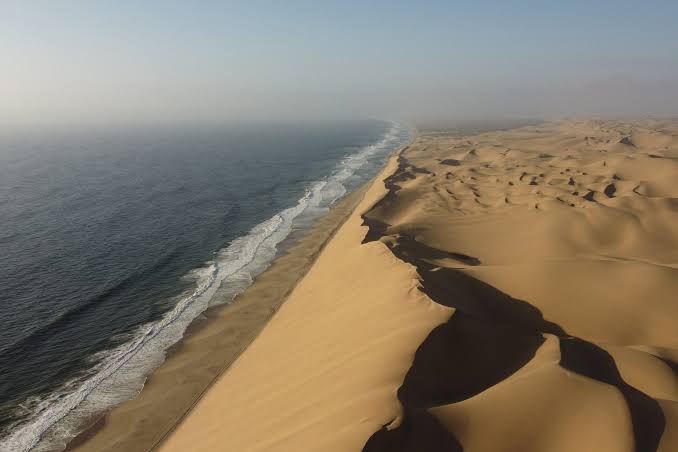The Namib Desert, stretching across 81,000 square kilometers along Africa’s Atlantic coast, stands as one of the planet’s most ancient and arid landscapes. With its inception dating back approximately 55 million years, it boasts a unique terrain reminiscent of the Martian surface, characterized by towering sand dunes, rugged mountains, and expansive gravel plains. Its coastal location infuses it with a distinctive charm, where the stark contrast between the desert and the ocean creates a mesmerizing vista.
Despite its harsh and inhospitable environment, the Namib Desert is not devoid of life. Various species, including ostriches, antelopes, rodents, and a plethora of birdlife, have adapted ingenious strategies to thrive in this harsh realm. One of its most intriguing phenomena is the fairy circles, enigmatic barren patches surrounded by lush grass, whose origins remain a subject of scientific inquiry and speculation, even evoking theories involving extraterrestrial involvement.
Water, the elixir of life, is a scarce commodity in the Namib. Yet, the desert ingeniously sustains itself through the moisture-rich fog that rolls in from the Atlantic, offering a lifeline to its resilient inhabitants. The colossal sand dunes, tinted in hues of red from iron oxide deposits, stand as immutable sentinels sculpted by the relentless dance of the wind, showcasing nature’s artistry at its finest.
For intrepid adventurers and curious souls, the Namib Desert beckons with its raw beauty and enigmatic allure. From the ethereal Tsauchab River, which momentarily springs to life during the rare monsoon seasons, to the surreal landscapes that seem to transcend earthly realms, every corner of this ancient desert whispers tales of resilience, adaptation, and the enduring power of nature.


